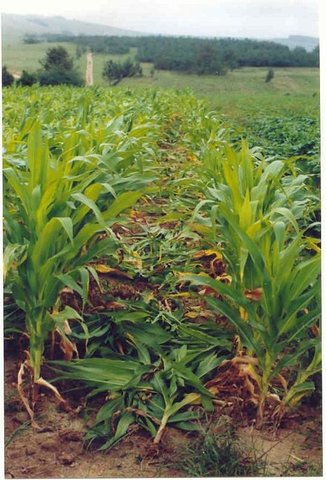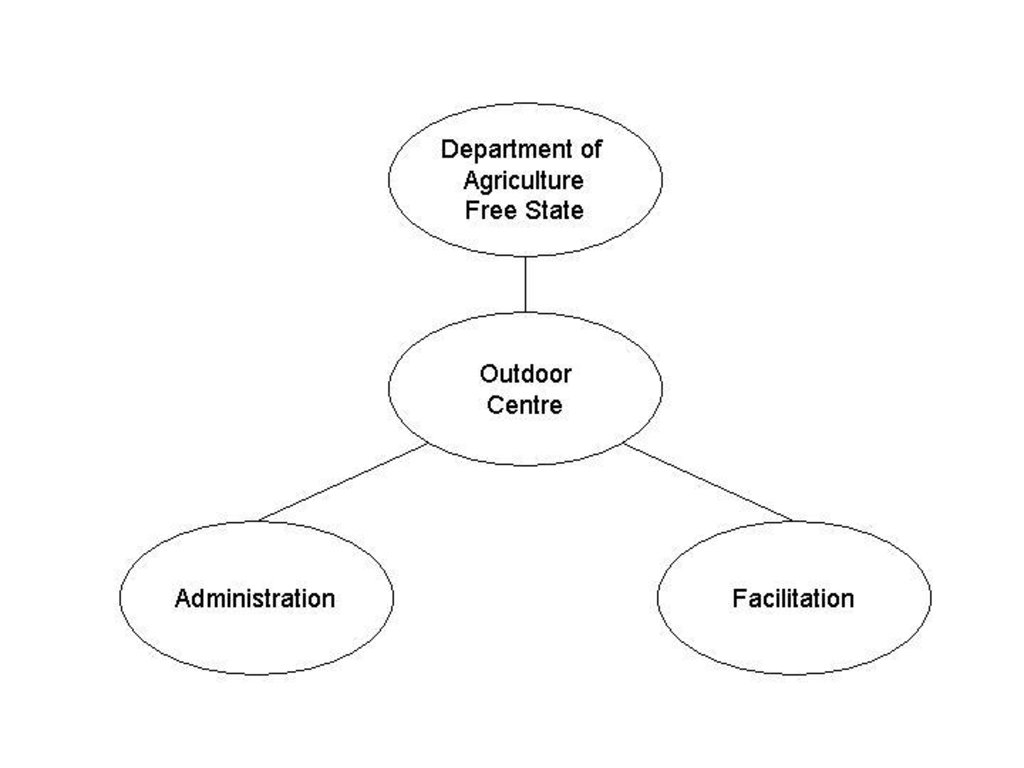Multi-stakeholder LandCare process [جنوب أفريقيا]
- تاريخ الإنشاء:
- تحديث:
- جامع المعلومات: Hendrik Johannes Smith
- المحرر: –
- المُراجع: Fabian Ottiger
Multi-stakeholder process, LandCare, Action research
approaches_2561 - جنوب أفريقيا
عرض الأقسام
توسيع الكل طي الكل1. معلومات عامة
1.2 تفاصيل الاتصال بالأشخاص الرئيسيين لمصدر المعلومات والمؤسسات المعنية بتقييم وتوثيق النهج
متخصص في الإدارة المستدامة للأراضي:
Hofer Peter
Amt für Landwirtschaft und Natur des Kantons Bern LANAT
Ruetti, 3052 Zollikofen
سويسرا
اسم المؤسسة (المؤسسات) التي سهلت توثيق/تقييم النهج (إذا كان ذلك على صلة)
Amt für Landwirtschaft und Natur des Kantons Bern (LANAT) - سويسرا1.3 الشروط المتعلقة باستخدام البيانات الموثقة من خلال WOCAT
يوافق جامع المعلومات والشخص (لاشخاص) الرئيسي لمصدر المعلومات على الشروط المتعلقة باستخدام البيانات الموثقة من خلال WOCAT:
نعم
1.4 المراجع الخاصة باستبيان(استبيانات) تقنيات الإدارة المستدامة للأراضي

Conservation Agriculture [جنوب أفريقيا]
Conservation agriculture included aspects such as crop rotation, mulching and no-tillage.
- جامع المعلومات: Hester Gertruida Jansen van Rensburg
2. وصف نهج الإدارة المستدامة للأراضي
2.1 وصف موجز للنهج
A multi-stakeholder approach using action research methodologies to implement conservation agriculture
2.2 وصف تفصيلي للنهج
وصف تفصيلي للنهج:
Aims / objectives: - To develop and diffuse conservation agriculture technologiy
- To develop capacity among stakeholders
- To improve soil health
- To reverse soil degradation
Methods: - Training of trainers, i.e. lead farmers and extension worker
- Awareness events, e.g. farmer days, field days
- On-farm experimentation
- Farmer-to-farmer extension
- Local institutionalization
- Partnerships Monitoring and Evaluation
Stages of implementation: 1. Stakeholder analysis
2. Diagnosis / Situation analysis
3. Planning and design
4. Implementing and management
5. Learning and adopting
6. Exit strategy
Role of stakeholders: Researchers: - facilitators, advisors, trainers, management of trials
Extension worker:- advisors, trainers
Lead farmers: Trainers for other farmers, awarenes builders, on-farm: leaders of farmer managed trials/experiments, facilitators for learning groups
Other important information: Other stakeholders, e.g. input suppliers are also important and need to be involved at various stages and events
2.5 البلد/المنطقة/المواقع التي تم تطبيق النهج فيها
البلد:
جنوب أفريقيا
المنطقة/الولاية/المحافظة:
South Africa / KwaZulu-Natal
مزيد من التفاصيل حول الموقع:
Bergville / Emmaus Ward
2.6 تواريخ بدء وإنهاء تنفيذ النهج
أشر إلى سنة البدء:
2000
سنة الإنهاء (إذا لم يعد النهج مطبقًا):
2006
2.7 نوع النهج
- قائم على مشروع/برنامج
2.8 الغايات/الأهداف الرئيسية للنهج
The Approach focused on SLM only
Build capacity among key stakeholders Change traditional practices to conservation agriculture practices Build strong local institutions (learning groups) Improve experimental skills Improve soil health
The SLM Approach addressed the following problems: Soil erosion Soil fertility and -acidity Poverty / food security Lack of knowledge and skills Poor / weak local institutions
2.9 الظروف التي تمكن أو تعيق تنفيذ التقنية/التقنيات المطبقة بموجب النهج
توفر/الوصول إلى الموارد والخدمات المالية
- معيق
Lack of capital inputs
Treatment through the SLM Approach: Groups save money to buy inputs in bulk
الإطار المؤسساتي
- معيق
Poor local institutions, poor leadership
Treatment through the SLM Approach: Building capacity in learning groups to learn and adapt / develop leadership / facilitation skills
الإطار القانوني (حيازة الأراضي، وحقوق استخدام الأراضي والمياه)
- تمكين/تمكيني
The existing land ownership, land use rights / water rights moderately helped the approach implementation: Helped ot introduce grazing system that promotes rotational grazing, which is a major new approach for communal grazing.
3. المشاركة وأدوار الأطراف المعنية
3.1 أصحاب المصلحة المعنيون بالنهج وأدوارهم
- مستخدمو الأراضي المحليون/المجتمعات المحلية
Different cultural roles and attitudes between men and women. Women were better performers in training others; women were easier trained than men
- منظمة غير حكومية
- الحكومة الوطنية (المخططون، صانعو القرار)
- منظمة دولية
3.2 انخراط مستخدمي الأراضي المحليين/المجتمعات المحلية في المراحل المختلفة للنهج
| انخراط مستخدمي الأراضي المحليين/المجتمعات المحلية | حدد من شارك وصف الأنشطة | |
|---|---|---|
| المبادرة/التحفيز | غير موجود | Farmers were interviewed during the informal semi-structured survey |
| التخطيط | غير موجود | |
| التنفيذ | تفاعلي | Lead farmers were part of implementing team; were responsible for farmer-to-farmer extension |
| الرصد/التقييم | تفاعلي | Were fully involved in most monitoring and evaluation activities |
| Research | تفاعلي | Lead farmers were responsible for farmer mangaed trials |
3.3 مخطط التدفق (إذا كان متاحًا)
3.4 اتخاذ القرار بشأن اختيار تقنية/تقنيات الإدارة المستدامة للأراضي
حدد من الذي قرر اختيار التقنية/التقنيات التي سيتم تنفيذها:
- مستخدمو الأراضي بشكل أساسي، بدعم من متخصصي الإدارة المستدامة للأراضي
اشرح:
Decisions on the method of implementing the SLM Technology were made by mainly by SLM specialists with consultation of land users
4. الدعم الفني وبناء القدرات وإدارة المعرفة
4.1 بناء القدرات/التدريب
هل تم تقديم التدريب لمستخدمي الأراضي / الأطراف المعنيين الآخرين؟:
نعم
حدد من تم تدريبه:
- مستخدمو الأراضي
شكل التدريب:
- مناطق العرض
- دورات
المواضيع المغطاة:
Conservation agriculture principles, communication, visionry, training, value adding
4.2 خدمة استشارية
هل يملك مستخدمو الأراضي وصولا إلى خدمة استشارية؟:
نعم
حدد ما إذا كانت الخدمة الاستشارية متوفرة:
- في حقول مستخدمي الأراضي
وصف/تعليقات:
Name of method used for advisory service: Multi-stakeholder process using action research; Key elements: Monitoring and evaluation / experiments, Training of farmers, Farmer-to-farmer extension
Advisory service is quite adequate to ensure the continuation of land conservation activities; Have been empowered quite successfully with project
4.4 الرصد والتقييم
هل يشكل الرصد والتقييم جزءا من النهج؟:
نعم
التعليقات:
bio-physical aspects were regular monitored through measurements; indicators: Soil health
technical aspects were regular monitored through measurements; indicators: Conservation agriculture principles adopted
socio-cultural aspects were regular monitored through observations; indicators: Changes in SKA
economic / production aspects were regular monitored through measurements; indicators: Yield & gross margin
area treated aspects were regular monitored through observations; indicators: Area
no. of land users involved aspects were regular monitored through measurements; indicators: Number of farmers trained
management of Approach aspects were None monitored through measurements; indicators: Number of farmers using tools for adaptive management
There were many changes in the Approach as a result of monitoring and evaluation: Monitoring and evaluation was the main methodology used to induce change to focus, improve and integrate project management. Land users learned to use monitoring and evaluation tools to improve their learning in groups as well as their adaptive management capacity.
4.5 البحوث
هل كانت البحوث جزءًا من النهج؟:
نعم
أعط تفاصيل إضافية وأشر إلى من قام بالبحوث:
Action research through monitoring and evaluation; applied at different levels; used various tools and technologies to apply it. Action research was used to improve, focus and integrate project strategies
Research was carried out on-farm
5. التمويل والدعم المادي الخارجي
5.1 الميزانية السنوية لمكون الإدارة المستدامة للأراضي في النهج المذكور
إذا لم تكن الميزانية السنوية الدقيقة معروفة، قم بالإشارة إلى نطاقها:
- 100,000-10,000
التعليقات (على سبيل المثال المصادر الرئيسية للتمويل/الجهات المانحة الرئيسية):
Approach costs were met by the following donors: government (LandCare programme,90%, Research programme 10%): 100.0%
5.2 الدعم المالي/المادي المقدم لمستخدمي الأراضي
هل حصل مستخدمو الأراضي على دعم مالي/ مادي لتنفيذ التقنية/ التقنيات؟:
نعم
5.3 إعانات لمدخلات محددة (بما في ذلك العمالة)
- معدات
| حدد المدخلات التي تم دعمها | إلى أي مدى | حدد الإعانات |
|---|---|---|
| الآلات | ممول بالكامل | |
| أدوات | ممول بالكامل | |
- زراعة
| حدد المدخلات التي تم دعمها | إلى أي مدى | حدد الإعانات |
|---|---|---|
| بذور | ممول جزئيا | |
| أسمدة | ممول جزئيا | |
إذا كان العمل من قبل مستخدمي الأراضي مدخلاً جوهريًا، فهل كان:
- تطوعي
التعليقات:
Only labour on main trial was paid in cash, other was voluntary
5.4 الائتمان
هل تم توفير ائتمان في إطار نهج أنشطة الإدارة المستدامة للأراضي؟:
كلا
6. تحليل الأثر والتصريحات الختامية
6.1 آثار النهج
هل ساعد النهج مستخدمي الأراضي على تنفيذ وصيانة تقنيات الإدارة المستدامة للأراضي؟:
- لا
- نعم، قليلا
- نعم، باعتدال
- نعم، إلى حد كبير
Conservation agriculture pronciples: no-till, mulching, multiple cropping, using special implements
Did other land users / projects adopt the Approach?
- لا
- نعم، قليلا
- نعم، باعتدال
- نعم، إلى حد كبير
Aim is to scale-out approach to other projects/ programmes.
Did the Approach help to alleviate poverty?
- لا
- نعم، قليلا
- نعم، باعتدال
- نعم، إلى حد كبير
They achieved food security status; could sell some products and some of the value added products
6.3 استدامة أنشطة النهج
هل يمكن لمستخدمي الأراضي المحافظة على استدامة ما تم تنفيذه من خلال النهج (بدون دعم خارجي)؟:
- نعم
6.4 نقاط قوة/مزايا النهج
| نقاط القوة/ المزايا/ الفرص من وجهة نظر مستخدمي الأراضي |
|---|
| Have higher level of knowledge and skills (How to sustain/ enhance this strength: Through experimentation, communication forums, field days, training courses) |
| Better contact with outside stakeholders - improved networks (How to sustain/ enhance this strength: Frequent stakeholder forums) |
| Higher status of lead farmers and their groups (How to sustain/ enhance this strength: Continuous contact and use of lead farmers' experience and capacity) |
| Improved food security through collective action (How to sustain/ enhance this strength: Monitoring and evaluation of sustainable land management practices) |
| Improved communication between land users (How to sustain/ enhance this strength: Frequent local action forums) |
| نقاط القوة/ المزايا/ الفرص من وجهة نظر جامع المعلومات أو غيره من الاشخاص الرئيسيين لمصدر المعلومات |
|---|
| Empower key stakeholders (How to sustain/ enhance this strength: Frequent stakeholder forums / meetings / workshops) |
| Help people 'learn how to learn' (How to sustain/ enhance this strength: Provide them with learning tools (monitoring and evaluation) and skills) |
| Promote a culture of adoptive management (How to sustain/ enhance this strength: Build their capacity through monitoring and evaluation tools and processes) |
| Develop a capacity to experiment among farmers (How to sustain/ enhance this strength: Facilitate and promote experiments through agricultural research) |
| Develop self-reliant local institutions and leadership (How to sustain/ enhance this strength: Develop local capacity to lead and facilitate learning groups) |
7. المراجع والروابط
7.1 طرق جمع/مصادر المعلومات
- زيارات ميدانية، مسوحات ميدانية
- مقابلات مع مستخدمي الأراضي
7.2 المراجع للمنشورات المتاحة
العنوان، المؤلف، السنة، النظام القياسي الدولي لترقيم الكتب ISBN:
Amt für Landwirtschaft und Natur des Kantons Bern LANAT, Ruetti, 3052 Zollikofen. Kanton Bern fördert Ressourcen schonenden Ackerbau.AGRARForschung 14 (3): 128-133, 2007
متاح من أين؟كم التكلفة؟:
http://www.vol.be.ch/site/lanat-3155-mbressourcen.pdf
الروابط والوحدات المواضيعية
توسيع الكل طي الكلالروابط

Conservation Agriculture [جنوب أفريقيا]
Conservation agriculture included aspects such as crop rotation, mulching and no-tillage.
- جامع المعلومات: Hester Gertruida Jansen van Rensburg
الوحدات المواضيعية
لا يوجد وحدات مواضيعية


